The Belo Monte Dam (formerly known as Kararaô) is a hydroelectric dam complex on the northern part of the Xingu River in the state of Pará, Brazil.
After its completion, with the installation of its 18th turbine, on November 2019, the installed capacity of the dam complex is 11,233 megawatts (MW), which makes it the second largest hydroelectric dam complex in Brazil and fourth largest in the world by installed capacity, behind the Three Gorges Dam and the Xiluodu Dam in China and the Brazilian-Paraguayan Itaipu Dam. Considering the oscillations of flow river, guaranteed minimum capacity generation from the Belo Monte Dam would measure 4,571 MW, 39% of its maximum capacity.
It total cost about US$18.5 billion (estimated).
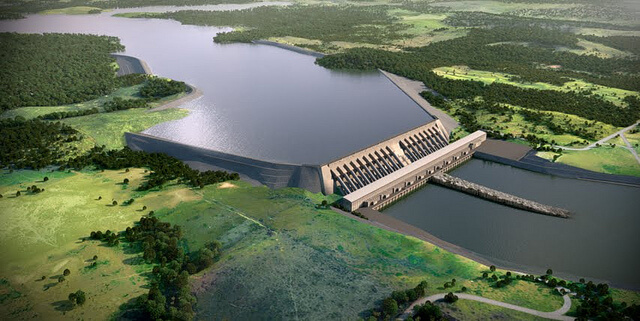
The first turbines went online on 5 May 2016. As of October 2019 all turbines at Pimental and 17 turbines in main power powerhouse are online with total installed capacity of 10,388.87 MW at Belo Monte site, totaling 10,621.97 with the Pimental site. The power station was completed in November 2019.
Main engineering structure
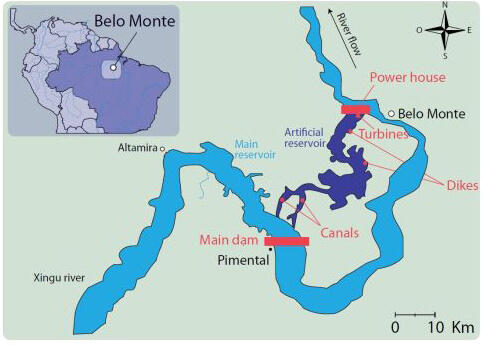
The Belo Monte Dam (AHE Belo Monte) is a complex of three dams, numerous dykes and a series of canals in order to supply two different power stations with water.
The Belo Monte Dam would be 90 metres (300 ft) tall and 3,545 metres (11,631 ft) long and have a structural volume (embankments included) of 25,356,000 cubic metres (895,400,000 cu ft)
the Bella Vista would be 33 metres (108 ft) high and 351 metres (1,152 ft) long and have a structural volume of 239,500 cubic metres (8,460,000 cu ft).
The Dos Canais Reservoir would have a normal capacity of 1,889,000,000 cubic metres (1,531,000 acre⋅ft), a normal surface area of 108 square kilometres (42 sq mi) and a normal elevation area of 97 metres (318 ft) above sea level. The Bela Vista Dam which serves as the complex’s secondary spillway would have a maximum discharge capacity of 14,600 cubic metres per second (520,000 cu ft/s).
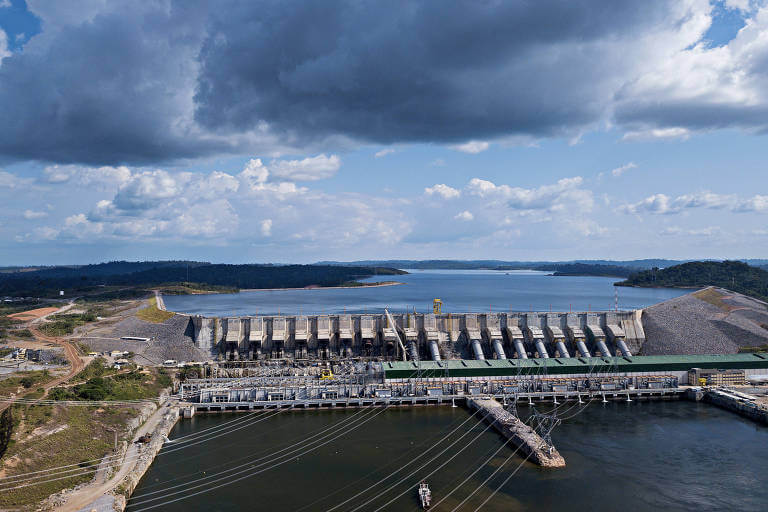
The Pimental Dam (3°27′33″S 51°57′31″W) on the Xingu would be 36 metres (118 ft) tall and 6,248 metres (20,499 ft) long and have a structural volume of 4,768,000 cubic metres (168,400,000 cu ft). It would create the Calha Do Xingu Reservoir which would have a normal capacity of 2,069,000,000 cubic metres (1,677,000 acre⋅ft) and surface area of 333 square kilometres (129 sq mi).
The dam would support a power station and its spillway would serve as the complex’s principal spillway with 17 floodgates and a 47,400 cubic metres per second (1,673,915 cu ft/s) maximum discharge.The dam’s reservoir would also divert water into two 12 km (7 mi) long canals. These canals would supply water to the Dos Canais Reservoir, which is created within the “Big Bend” by the main dam, Belo Monte (3°06′44″S 51°48′56″W), a series of 28 dykes around the reservoir’s perimeter and the Bela Vista Dam (3°19′46″S 51°47′27″W) which lies on the Dos Canais Reservoir’s eastern perimeter. The Belo Monte Dam would support the main power station in the complex.
The power station was to have twenty vertical Francis turbines listed at 550 MW (max 560 MW). Supplying each turbine with water is a 113-metre-long (371 ft), 11.2 metres (37 ft) diameter penstock, affording an average of 89.3 metres (293 ft) of hydraulic head. The Pimental Dam’s power station was to have seven Kaplan bulb turbines, each rated at 25.9 MW and with 13.1 metres (43 ft) of hydraulic head.Later the unit count was decreased by using more powerful units (see next section).
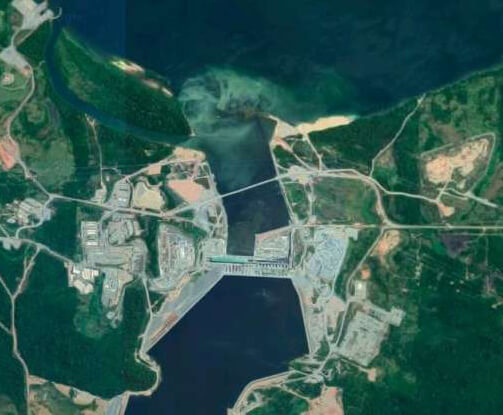
Power generation and distribution
The planned capacity of Belo Monte is listed at 11,233 MW. It is composed of the main Belo Monte Dam, and its turbine house with an installed capacity of 11,000 MW. The Pimental Dam which also includes a turbine house would have an installed capacity of 233.1 MW, containing 38.85 MW bulb turbines. The generation facility is planned to have 18 Francis turbines with a capacity of 611.11 MW each.
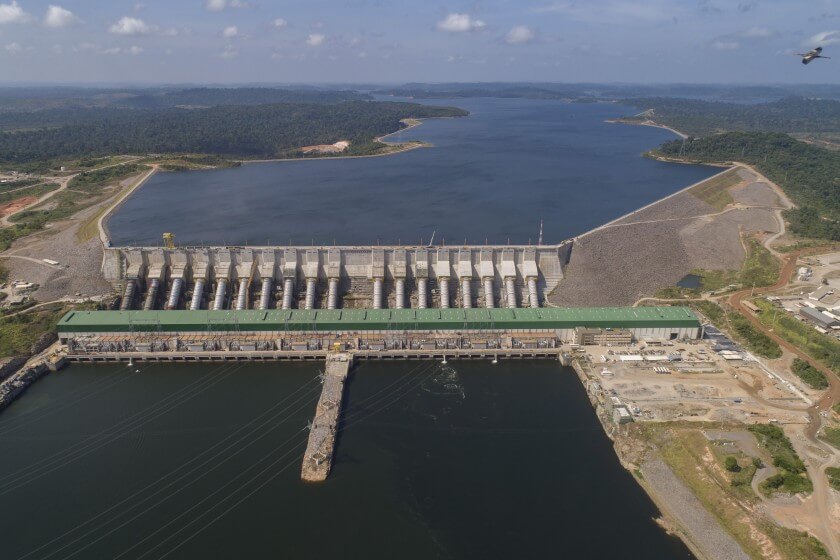
In February 2011, Norte Energía signed contracts with:
IMPSA worth $450 million to design and install by the fall of 2015 four Francis turbine generation units to provide 2,500 MW of power.
Andritz AG to provide three Francis turbines and the six bulb turbines, and the 14 excitation systems for the main power house and additional equipment for the Pimental power house.
Alstom worth $682.3 million to provide 7 Francis turbines, and 14 gas insulated substations for the facility.
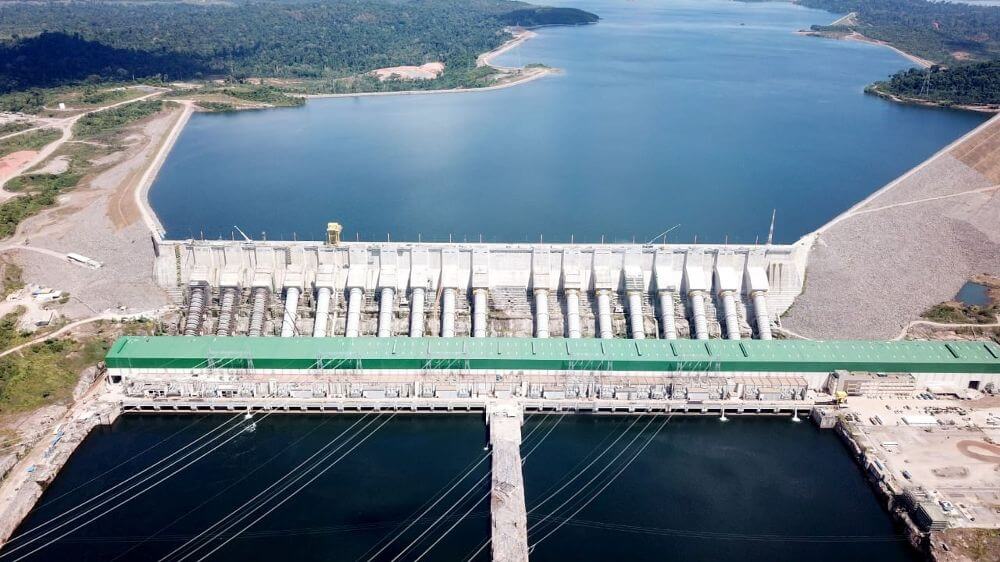
Belo Monte Dam Data
- Country
- Brazil
- Location
- Pará, Brazil
- Cost
- US$18.5 billion (estimated)
- Owner(s)
- Norte Energia, S.A.
- Status
- In use
- Began
- 2011
- Opening date
- 2016
- Height
- Belo Monte: 90 m (295 ft) Pimental: 36 m (118 ft) Bela Vista: 33 m (108 ft)
- Length
- Belo Monte: 3,545 m (11,631 ft) Pimental: 6,248 m (20,499 ft) Bela Vista: 351 m (1,152 ft)
- Installed capacity
- 11,230 MW
- Turbines
- Belo Monte: 18 x 611.11 MW Pimental: 6 x 38.85 MW
- Type of dam
- Composite
- River
- Xingu River
- Spillway type
- Pimental: 17 gates Bela Vista: 4 gates
View Belo Monte Dam on Google Satellite Map
Google satellite maps allow you to see building details more clearly, including natural landscapes such as mountains, rivers, deserts, sea and man-made engineering buildings.
If you are very interested in this engineering building, it is a good idea to click below Google Map icon. We will help you jump to the corresponding location of this building or engineering on Google satellite map.






























































